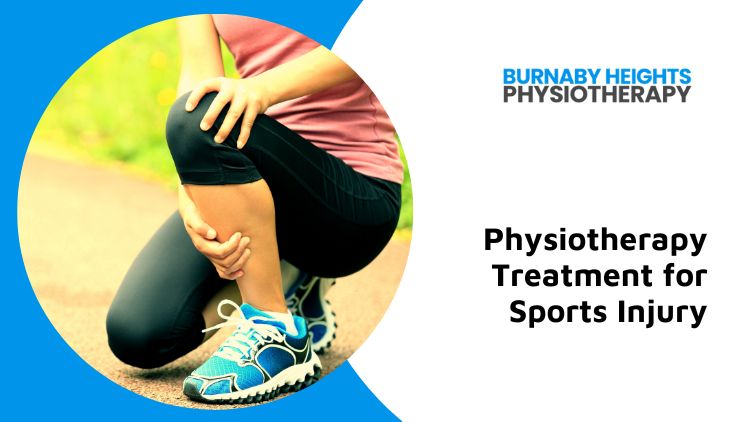
A Practical Guide To Physiotherapy Treatment Choices For Lower Back Pain
July 20, 2022
How to Choose the Right Physiotherapy for Shoulder Pain?
August 23, 2022How Physiotherapy Can Help You Recover from Sports Injuries
Sports can be an excellent means to keep fit, build self-confidence, and meet new people.
Whether you’re a world-class professional athlete or a casual weekend warrior, odds are at some point you’ve suffered an injury. Approximately 70 percent of all recreational players will experience some pain, aches, or soreness in their joints and muscles during a match. If you participate in any type of sports frequently, it’s practically unavoidable that you will hurt yourself during your athletic activity.
That’s because the human body undergoes continuous wear and tear. When we perform recurring actions or activities, our muscles become overused and start wearing out quicker.
Over time, these microtrauma injuries can lead to structural injury in the form of muscle tightness and/or tendinitis. An injury will prevent you from playing your favorite sport, keep you from the courts or turf for a long time, or lead to long-term consequences like chronic discomfort or decreased range of motion. Furthermore, if left untreated, these injuries can likewise develop into something more significant in the future.
What Are Some Types Of Sports Injuries?
- Disc Injury
- Golf Injuries
- Meniscal Injuries
- Nerve Injuries
- Neurological Pain
- Knee Pain
- Pelvic Pain
- Muscle Imbalances
- Muscle Strain
- Muscle Weaknesses
- Body Imbalances
The bright side is that a sports injury doesn’t need to keep you off the field or court for long. Evidence-based physiotherapy can help deal with many sports-related injuries and keep them from becoming chronic.
Here are six ways physiotherapy may help cure your sports injury faster:
1. Reinforce Your Existing Muscles
You have probably heard this one before. Every action you perform in your sport (such as tossing a baseball, running a race, diving in swimming) needs a certain level of strength in the muscles. In the case of throwing a ball, that means the muscles in your shoulder, elbow, wrist, and hand. With time though, these muscles can come to be imbalanced and weak. This imbalance can come on as we get older and our bodies lose muscle mass. It can also take place if you’ve been playing a sport for a very long time without providing your muscles a chance to rest and recover in between rounds of activity.
Fortunately, you can help prevent injuries and enhance your performance on the field with the strengthening exercises, and manual therapy treatment techniques, your physiotherapist can teach you. What’s more, building up your existing muscles can help resolve the pain, tightness, and inflammation that come along with any sports injury.
2. Treat Tendonitis and Strain
The connecting tissue in your joints is prone to swelling and injury due to the continuous motion of your joints. However, if your swelling is triggered by a small tear in the tendon, then physiotherapy can help relieve your tendonitis.
Tendonitis is an inflammatory condition that can develop in your tendons when they become inflamed and painful. Certain activities, such as running or jumping, basketball, and tennis are especially likely to cause it. If you struggle with tendonitis or a sprain, physiotherapy can care for your injury quicker. It can also help you prevent a strain injury from taking place later on.
3. Learn New Motion and Conditioning Exercises
As you get older, your muscles and joints usually become less flexible. This could be because of genetics, injury, or a lack of regular physical activity or sports-specific movements. Additionally, if you’ve been participating in a sport for a long time, you might have suffered structural imbalances that cause you to be more susceptible to injury. For example, your shoulder muscles could be stronger than your lower back muscles, which puts strain on the lower spinal column.
If you want to protect against injury and increase your mobility, you want to attempt to develop new movement and strengthening workouts. Your physiotherapist can show you the best exercises to increase your overall flexibility and restore joint performance. Doing so can help heal an injury, minimize your risk of injury, improve your flexibility, and increase your regular range of motion.
4. Get a better range of motion
When you’re injured, you often have to restrict your activities and/or your range of movement. Because of this, you risk developing pain, stiffness, and loss of mobility. Thankfully, as you recuperate, your joints and muscles regain their complete range of motion. This process can happen extremely rapidly, but it usually takes about 2 weeks for your muscles to begin to rejuvenate and get back to their normal shape. To prevent injury and speed up the recovery cycle, physiotherapy can apply therapies and exercises that enhance your range of motion. Doing so can ease pain, increase your flexibility, and help you return to your daily activities sooner.
5. Reduce Inflammation and Stiffness
As you recover from an injury and your muscle tissues get stronger, you might develop an accumulation of scar tissue. This is a regular part of the recovery process and can help to avoid future injuries. It can help you get back to your normal activities much quicker. To reduce your risk of suffering from tightness, physiotherapy will help you maintain your range of motion, even if you’re not working out.
6. Avoid Repetitive Strain Injuries
A recurring strain injury happens when a previously minor injury becomes exacerbated as you go back to a more extreme level of activity. For example, if you have been playing basketball for a few weeks and you try to leap higher than you typically do, you might end up reinjuring your ankle.
Repetitive strain injuries can occur in any sport when the regular level of activity is increased, but they are most typical in sports that include repetitive motion, such as weightlifting, baseball, soccer, football, and basketball. Therefore, always start with low-impact activities. Physiotherapy can relieve stress injuries by re-aligning muscles and connective tissues, rubbing out knots or pain points, and boosting the blood flow to the affected part of your body.
Final Thoughts
Physiotherapy at Burnaby Heights Physiotherapy can help treat numerous sports injuries, including sprains, strains, tension fractures, tendonitis, joint discomfort, and joint dislocation. We also have an additional injury prevention program to prevent future injuries. Physiotherapy will help you strengthen your existing muscles, treat your tendonitis and strain, develop fresh movement and strengthening exercises, enhance your range of motion, reduce swelling and stiffness, prevent repetitive strain injuries, and minimize reinjuries.
Give the team at Burnaby Heights Physiotherapy a call today to get back in the game!



